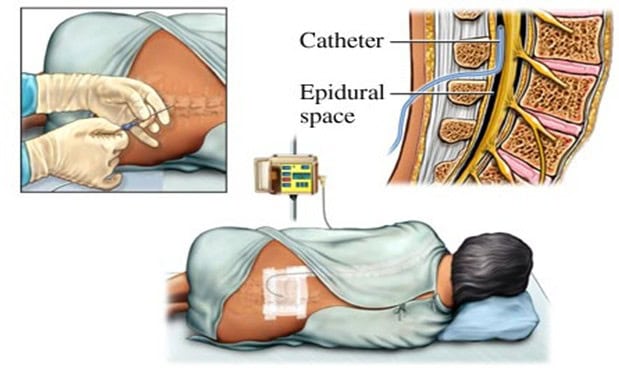Many factors affect pain perception in labor ; fear, number of previous births, fetal presentation, cultural ideas of labor, beta-endorphin levels and women’s natural pain threshold. Contraction of the uterine muscles stimulates the nerve endings of the uterus/cervix, which causes this pain felt during labor. Gone are the days where the mother in labor curses her husband for making her go through the torture of labor. With the advancement in anesthesia, we can now offer various alternatives to relieve labor pain!
Non-pharmacological pain control:
- Psychological preparation/education – By joining antenatal classes, the expectant mothers & their spouses will be more knowledgeable with the birthing process hence gain more satisfaction with the experience and this will be followed by a less complicated delivery.
- Water therapy (birthing underwater) – Immersion in warm water helps to relax the muscles during the first stage of labour.
- Massages (reflexology) – Based on reflex zones on the feet as they correspond to different parts of the body. These zones are massaged in order to increase the circulation within the body, reducing tension and enhance relaxation.
- Hypnosis – Induces a state of concentration, combined with relaxation, to reduce pain perception.
- Acupuncture – Application of pressure to increase the level of endorphins (natural pain-relieving chemicals) in the body.
- Breathing exercises – The type of breathing that is most beneficial at the beginning of a contraction, while it lasts and as it ends.
- TENS (Transcutaneous Electrical Nerve Stimulation) – A machine generating low level electrical impulses that are transmitted through electrodes placed on the women’s back. Pain relief is achieved by impulses stimulating nerves in the back and interfere with the pain signals transmitted to the brain which also encourages a build-up of the natural pain-relieving chemicals (endorphins) in the body.
Pharmalogical pain control :
- Entonox gas inhalation – It is a mixture of nitrous oxide and oxygen given through a demand valve mask during contraction pain. Side-effects are dry mouth, nausea, dizziness, disorientation and sedation.
- Pethidine – It is a synthetic opioid and a potent analgesic, but can cause nausea, vomiting, dizziness, sedation, delayed breast feeding in the mother and respiratory depression in the baby as this drug crosses the placenta blood barrier.
- Epidural – This method has the minimum side-effects to mother and baby. It is the ideal mode of pain relief and currently is the commonest and most preferred mode of analgesia. It is a method by which a fine tube is inserted into the epidural space by which a dose of local anesthetic medication is introduced into the epidural space which blocks the conduction of pain sensation on the nerves of the pelvic region(uterus/cervix/vagina).

Epidural is recommended in twin/multiple pregnancy, caesarean delivery and painful/prolong labour.
Myths related to epidural:
- Backache/back pain
Due to the shift of the center of gravity during pregnancy, the spine will move back to the normal anatomical position after delivery, thus causing these symptoms, especially in mothers who had more than normal weight gain.
- Paralysis
Spinal cord ends at L2/L3 level and the epidural is inserted below this level, thus injury to the main cord is unlikely. When modalities like these are present with the advancement of medical practices, birthing experiences have been transformed from one which was difficult, stressful and never-the-less, painful, to something relaxing, easy and painless.
Share:
Was this article helpful?
Share:
Was this article helpful?
Health Packages
Elevate your health with tailored health packages at Columbia Asia Hospital. Take charge of your health journey today.

